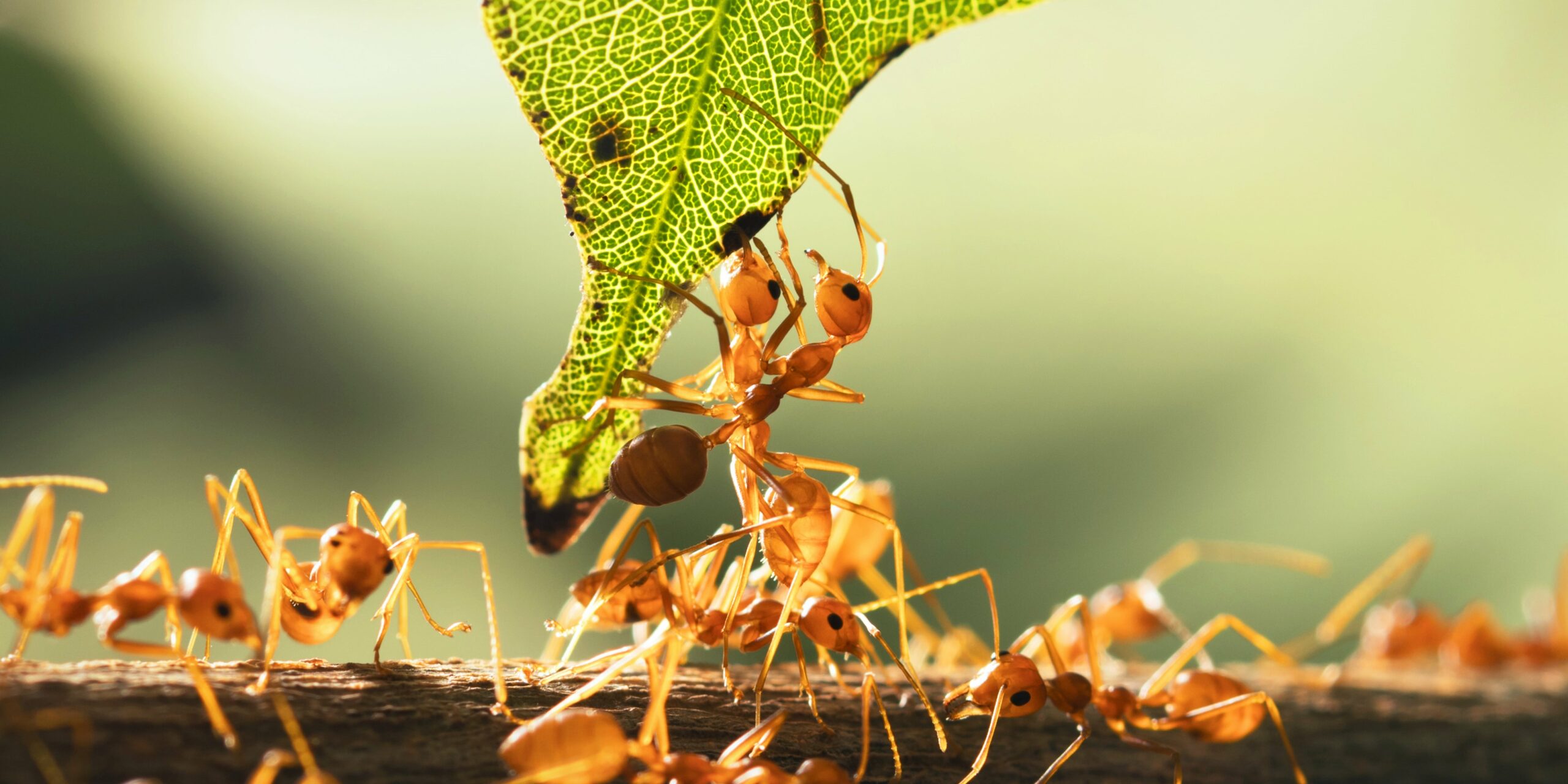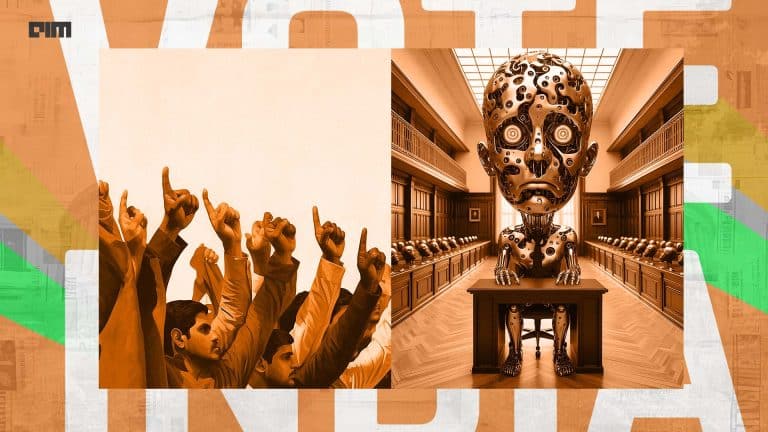The pandemic came without a playbook, and the crisis has pushed the traditional practice of solving problems by collecting requirements, making assumptions, brainstorming ideas, and providing solutions to the curb.
Post-COVID, it’s imperative to plan experiments to test your hypotheses and move to a more scientific problem-solving approach.
But, how?
Let us learn from ants – the most diligent creatures that optimize their time, resources, and skills to the fullest.
How Ants Find Food? Experiment-based Intelligence of Nature
There are two ways ants can obtain food.
When an ant explores a path, it leaves pheromones (high-odour chemicals) for the next ant to follow its trail. It’s pure discovery-driven experimentation.
- A group of experimental ants will come out. Unable to find any pheromones, half of them will take the shorter route (straight path), and the other half will take the longer route.
- These experimental ants will collect food and return to the nest. The group following the shorter path will complete the round-trip faster and leave more pheromones behind.
- The follower ants will now travel back and forth along the stronger pheromone trace.
- Experimental ants that are on the longer course will soon change their path. And the pheromone deposits will begin to evaporate along the longer route.
- Soon every ant will travel along the straighter course.
Unlike Primates, ants have no concept of long and short but can still find routes. This is a glimpse into the intelligence of nature.
Lesson Learned: Move from Hypothesis-driven to Discovery-driven Method of Finding Solutions
The new method of thinking today should be less driven by hypothesis and more by discovery. We must figure out a way for discovery-driven problem solving, not bound by constraints, because the solution might lie in the area where a hypothesis might not have reached. And when we try to ‘discover the solution,’ we must accept that we do not know the right course, eventually breaking the linear narrative.
We’re often in our stick-in-the-mud tendency to zero in on outcomes based on our hypothesis and often lose the opportunity to find optimal solutions.
It’s imperative that the validations must go side-by-side with experiments. Interestingly, on finding paths, the ants started experimenting and eventually discovered the ‘food.’ It validated that the shorter route is the best way to collect the food.
Thus, the discovery-driven, problem-solving approach requires exploring options in a rapidly changing environment.
How Do Ants Identify Risks? Work Culture Evolution without Central Control
Ants have different roles.
- ‘Queen’ ant only lays eggs.
- ‘Foraging ants’ find food
- ‘Patrolling ants’ ensure that there are no predators around.
- ‘Nest keepers’ remove debris from the nest and stack it outdoors.
- ‘Midden workers’ go out, collect the pile and build a big bank away from the ant colony.
American Myrmecologist, Deborah M. Gordon, conducted experiments to ascertain ants’ behaviour on different external conditions.
Deborah’s First Experiment: How Ants Respond to Uncertainty?
In this experiment, Deborah planted predatory lizards near the colony.
The following day, when the patrolling ants discovered the lizard as a threat outside, the entire colony kept hiding inside.
Since ants can’t speak or see correctly, what can explain their intelligent behaviour?
After the patrollers left, the foragers waited at the colony’s entrance for their return. Although ants’ memory span is only 10 to 15 seconds, these can sense the threat when too many or too few patrolling ants enter the colony. However, if the optimal number of ants returns, it’s okay.
There is no central control – the Queen isn’t the boss. Ants interact locally to build an overall intelligent colony.
In today’s cut-throat competition, organizations most often operate in the survival mode.
But nature teaches more.
Evolution has never been linear. It oscillates forward.
However, we’ve primarily resorted to a work environment where central authority has complete control over decisions and growth.
Imagine a site executive reports to the senior about a change he observed. Transcending through the hierarchy, it finally reaches the top boss. Again, the response cascades down the same hierarchy. But by then, the situation might change, and the final response would be inept.
The command-control problem-solving approach solves the problems of yesterday.
How Do Ants Switch Roles? Distributed Problem-solving Based on Utilizing Buffer, Local Experience & Multiple Interactions
This is another view of the ants’ colony. 25% of ants work outside, and about 25% inside. Almost 50% are reserves. But they can also switch roles.
Isn’t this a counterintuitive question raised by nature?
Deborah’s Second Experiment: How Ants Respond to the Changing Food Availability?
To Deborah’s surprise, when the food supply increased, there were suddenly more foragers. Assuming those were reserves, she tapped individual ants to find that the increased number of ants were not all foragers but mostly the nest maintenance workers, patrollers, and midden workers.
The ‘reserve’ ants came out in different groups and exhibited imminent task fidelity. If there had been zero buffer, ants could neither have switched tasks nor have collected and stored excess food.
Deborah’s experiment highlights a few critical tenets of nature’s intelligence about ants having a 50% buffer? Isn’t such a large buffer inherently wasteful?
As a single entity, the ant was clueless about what to do. When the external conditions adapted to foraging, the colony’s dynamics changed. They adapted by working in parts to influence the whole group’s behaviour.
Thus, nature chooses adaptability over efficiency. In the absence of a buffer, one can’t conduct experiments required to discover the optimum problem-solving approach.
When you’re in a passive environment, perfection and efficiency are the right strategies. However, in rapidly changing conditions, you need to choose a ‘good enough’ approach over ‘perfection’ and ‘adaptable’ over ‘efficient.’
Key Takeaways for Business Leaders
Business leaders should learn five important lessons from ants.
- Rapid experimentations lead to discoveries that drive problem-solving.
- Centralized control is replaced by a distributed, problem-solving approach based on local experience.
- Multiple interactions among agents drive the free flow of information.
- Buffer provides flexibility to respond to changing conditions.
- The whole is greater than the sum of its parts.
Why is it Important to have a Distributed Problem-solving Approach in the Post-COVID Era?
When our ancestors hunted and gathered in Africa, do you think they had a central command?
Only a few existing languages during those times helped them communicate. Thus, humans hunted in large numbers without centralized control.
But, when did we lose it?
With the advent of agriculture, farmers could produce large quantities of food and store it for a long time. Eventually, property rights emerged, which led to countless disputes, and an organizational structure based on control became the norm.
Then came the Industrial Revolution. It led to the division of labour to other extremes. That’s how the factory paradigm emerged. Every individual had a well-defined role based on the production line. In lack of frequent interactions, there was no scope of experimentation. Hence, there was little discovery-driven problem-solving.
Then Karl Marx put forward the idea of communism, inspired by the command and control economy. This was followed by Ayn Rand’s phase, where aggravated men’s portrayal as hordes and the tenet of unfettered objectivism defined man as a heroic, omnipotent being. The protagonist in her books changed the way civilizations existed.
But, nature doesn’t encourage absolute organizational authority or the individual virtuoso.
Let Go Top-Down Management Approach
As a mechanical engineer, I learned that efficiency is the correct approach for identical outcomes. However, in a constantly changing environment, we must learn from nature and rethink our organizational structure.
Often, we’re unwilling to create a buffer, which contradicts what nature teaches us.
Innovations should not be momentous achievements of the entire civilization but a way of our lives. The innovation processes are a combination of many inventors’ joint efforts—multiple interactions and learning based on local experiences, lots of experiments, and ample buffers.
Post-COVID, traditional business models will no longer be relevant. Should we then restrict ourselves from merely observing the change?
Absolutely not.
Today, as leaders, we must learn from ants to embed the discovery-driven problem-solving approach and let go of the control approach. Instead, we must create buffers to experiment more to make the world better.







































































































